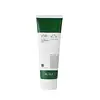What's inside
What's inside
 Key Ingredients
Key Ingredients

 Benefits
Benefits

 Concerns
Concerns

 Ingredients Side-by-side
Ingredients Side-by-side

Centella Asiatica Leaf Extract 47%
Skin ConditioningMyristic Acid
CleansingGlycerin
HumectantWater
Skin ConditioningPotassium Hydroxide
BufferingCocamide DEA
EmulsifyingPalmitic Acid
EmollientCocamidopropyl Betaine
CleansingStearic Acid
Cleansing1,2-Hexanediol
Skin ConditioningPhenoxyethanol
PreservativeSalicylic Acid
MaskingSodium Chloride
MaskingMelaleuca Alternifolia Leaf Oil
AntioxidantDisodium EDTA
Allantoin
Skin ConditioningLauric Acid
CleansingGluconolactone
Skin ConditioningCapryloyl Salicylic Acid
ExfoliatingCamellia Sinensis Leaf Extract
AntimicrobialLactic Acid
BufferingGlycyrrhiza Glabra Root Extract
BleachingDiospyros Kaki Leaf Extract
Skin ProtectingMorus Alba Bark Extract
Skin ConditioningOpuntia Coccinellifera Fruit Extract
Skin ConditioningButylene Glycol
HumectantCentella Asiatica Leaf Extract 47%, Myristic Acid, Glycerin, Water, Potassium Hydroxide, Cocamide DEA, Palmitic Acid, Cocamidopropyl Betaine, Stearic Acid, 1,2-Hexanediol, Phenoxyethanol, Salicylic Acid, Sodium Chloride, Melaleuca Alternifolia Leaf Oil, Disodium EDTA, Allantoin, Lauric Acid, Gluconolactone, Capryloyl Salicylic Acid, Camellia Sinensis Leaf Extract, Lactic Acid, Glycyrrhiza Glabra Root Extract, Diospyros Kaki Leaf Extract, Morus Alba Bark Extract, Opuntia Coccinellifera Fruit Extract, Butylene Glycol
 Reviews
Reviews

Ingredients Explained
These ingredients are found in both products.
Ingredients higher up in an ingredient list are typically present in a larger amount.
Salicylic Acid (also known as beta hydroxy acid or BHA) is a well-known ingredient for treating skin that struggles with acne and clogged pores. It exfoliates both the skin's surface and deep within the pores to help clear out buildup, control oil, and reduce inflammation.
Unlike AHAs (alpha hydroxy acids), salicylic acid is oil-soluble. This allows it to penetrate into pores which makes it especially effective for treating blackheads and preventing future breakouts.
Salicylic acid is also known for its soothing properties. It has a similar structure to aspirin and can calm inflamed or irritated skin, making it a good option for acne-prone skin that is also sensitive.
Concentrations of 0.5-2% are recognized by the U.S. FDA as an over-the-counter topical acne product.
It can cause irritation and/or dryness if one's skin already has a compromised moisture barrier, so it's best to focus on repairing that before introducing this ingredient into your routine.
While salicylic acid does not increase sun sensitivity, it’s still important to wear sunscreen daily to protect your skin.
If you are looking for the ingredient called BHA or Butylated Hydroxyanisole, click here.
Learn more about Salicylic AcidChances are, you eat sodium chloride every day. Sodium Chloride is also known as table salt.
This ingredient has many purposes in skincare: thickener, emulsifier, and exfoliator.
You'll most likely find this ingredient in cleansers where it is used to create a gel-like texture. As an emulsifier, it also prevents ingredients from separating.
There is much debate on whether this ingredient is comedogenic. The short answer - comedogenic ratings don't tell the whole story. Learn more about comegodenic ratings here.
The concensus about this ingredient causing acne seems to be divided. Research is needed to understand if this ingredient does cause acne.
Scrubs may use salt as the primary exfoliating ingredient.
Learn more about Sodium Chloride